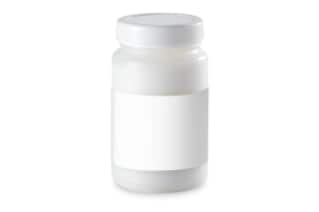
|
Separation Mode |
GPC/GFC/SEC |
|
Detection Method |
RI/ELSD, UV |
|
Formulation |
Solid |
|
Storage Condition |
4C (Fridge) |
|
System Type |
LC |
|
Shelf Life |
36 Months |
|
Shelf life upon reconstitution |
1 Week |
|
Shipping Condition |
Ambient |
|
Tolarence |
10% (Mp) |
|
Mass |
5 g |
|
Type |
Calibration |
|
UNSPSC |
41116107 |
|
Application |
Gel Permeation |
|
Product Type |
Standards |
|
Units per Package |
1 pk |

Polystyrene Standard 10,100
Waters is aware that getting reliable data calls for a system that has been properly calibrated. By providing you with well-characterized polymer standards and reference materials, we help you maintain your productivity. The polymers of our reference materials were carefully designed to provide known molecular weight information for various analyses. Whether you select a single standard or a cocktail mix, you can rely on the traceability of our performance-based reference materials.
A single GPC standard (Gel Permeation Chromatography standard), the Polystyrene Standard 10,100 is provided in a single package. It can be kept in a refrigerator at 4 degrees Celsius. This standard has a shelf life of 36 months and is easily preserved; however, after reconstitution, its shelf life is only one week. The tolerance for this Polystyrene Standard 10,100 is 10%. (Mp).
An individual GPC standard (Gel Permeation Chromatography standard) is used to determine the molecular weight. 10,100 Da for polystyrene. Standards for polystyrene calibration that you can use to characterize or validate your chemical study. These excellent, tested standards provide you confidence in your outcomes.
To shop for lab equipment your lab needs, browse our website or consult our catalog. On our website, you may browse a large selection of Waters offers and products, including various lab equipment that can be utilized with the Polystyrene Standard 10,100.
We also recommend looking into Oasis Method Development Sorbent Selection Plate, 10 mg Sorbent per Well, 30 µm, 1/pk; To eliminate uncertainty in SPE method development, the Oasis sorbent selection plate was created. The four Oasis mixed-mode, ion-exchange chemistries—strong and weak anion exchangers (MAX and WAX), as well as strong and weak cation exchangers—are neatly divided into three rows each in the 96-well plate configuration (MCX and WCX). It is helpful to have all Oasis ion-exchange sorbents on one plate when determining how to efficiently isolate unknown analytes, zwitterionic compounds, or mixtures of analytes with various retention/elution properties. The creation of sample preparation methods for these four chemistries can be accomplished fast and simply using just two SPE techniques.
How Come A Gradient System Might Be Necessary?
To enhance chromatographic separations, gradient systems let you adjust the flow rate and solvent/buffer changes. They can also be employed to accelerate column re-equilibration and sharpen separations. A four-solvent gradient system comprising methanol, acetonitrile, ammonium acetate buffer, and the formic acid solution is helpful for developing procedures. In order to do quick separations, quality control laboratories frequently employ isocratic systems that operate a mobile phase with a constant composition.